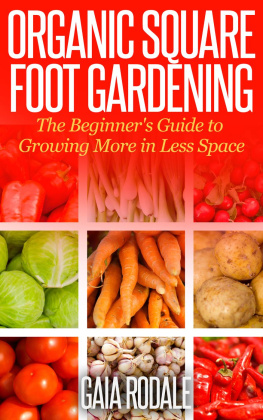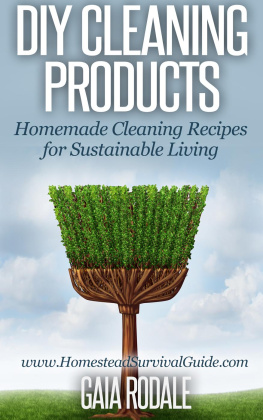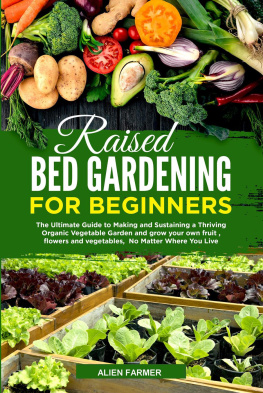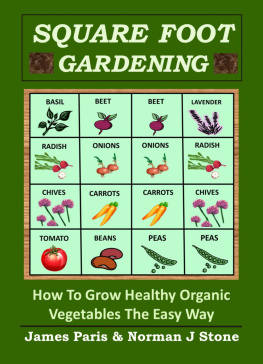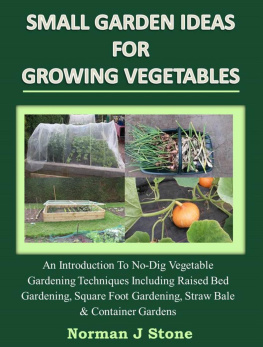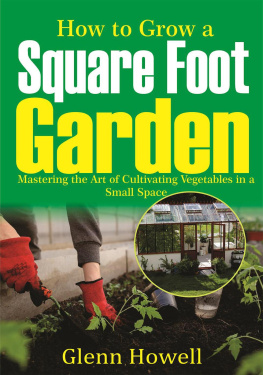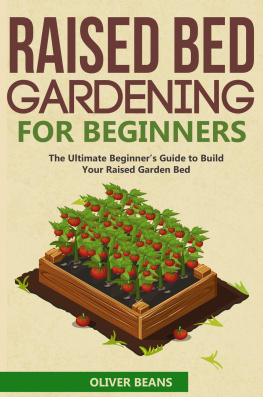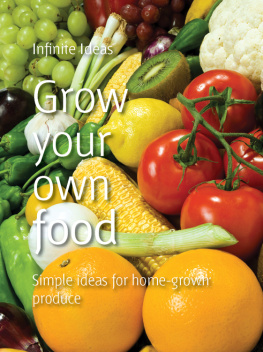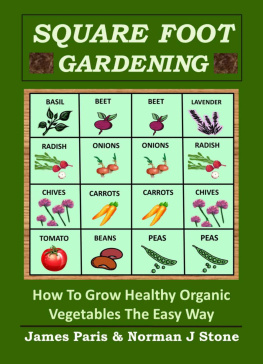Organic Square Foot Gardening
The Beginner's Guide
to Growing More in Less Space
Gaia Rodale
2014
All Rights Reserved. No part of this publication may be reproduced in any form or by any means, including scanning, photocopying, or otherwise without prior written permission of the copyright holder.
Disclaimer and Terms of Use: The Author and Publisher has strived to be as accurate and complete as possible in the creation of this book, notwithstanding the fact that he does not warrant or represent at any time that the contents within are accurate due to the rapidly changing nature of the Internet. While all attempts have been made to verify information provided in this publication, the Author and Publisher assumes no responsibility for errors, omissions, or contrary interpretation of the subject matter herein. Any perceived slights of specific persons, peoples, or organizations are unintentional. In practical advice books, like anything else in life, there are no guarantees of income made. This book is not intended for use as a source of legal, business, accounting or financial advice. All readers are advised to seek services of competent professionals in legal, business, accounting, and finance field.
Printed in the United States of America
Table of Contents
I ntroduction
Organic Square Foot Gardening 101
What is Square Foot Gardening?
Advantages of SFG
Organic Gardening Basics
Companion Planting Basics
Planning Your SFG
Location
Light
Wind and Weather
Other Factors
Available Space
Building Your Beds
Materials
Wood Planks
Concrete Blocks
Stone
Wattle
Logs
Sandbags
Basic Bed Construction
Amending Your Soil
Choosing the Right Plants
Factors to Consider
Companion Considerations
White and Green Grid
Three Sisters Grid
Great Veggie Grid
Planning your grid
Obtaining Your Plants
Planting and Tending Your SFG
Lay Out the Grid
Getting Everything in the Ground
Mulching
Watering
Basic Pest and Disease Control
Extending Your Season
Succession Planting
Stagger Planting
Conclusion
Introduction
I want to thank you and congratulate you for purchasing, Organic Square Foot Gardening: The Beginner's Guide to Growing More in Less Space
Not everyone with a green thumb has the luxury of a farm, with freshly tilled fields or a plot of land big enough for a garden that can supplement their grocery bills. However, that doesnt mean you cant grow the garden of your dreams. Square foot gardening is an approach to growing flowers, vegetables, and herbs in a way that requires only 20% of the space it would take for a similar yield from a traditional garden. This means that no matter how much space you have, if you have a green thumb and are itching to get your hands in the dirt, you no longer have an excuse for depriving yourself of the pleasure of planting things and watching them grow.
Most people arent willing to give up their whole backyard just to grow a garden. This is why this style of gardening has become so popular. People who would only have been able to grow one or two things can now grow a cornucopia of fresh, organic veggies, and still have plenty of room for a patio and a pool.
The key to square foot gardening is using raised beds that are laid out in densely planted grids to grow more plants in less space. By combining this garden design with a solid soil amendment strategy and organic gardening practices, square foot gardening makes gardening accessible to a wider range of people. It is perfectly suited to beginners, and is a great way to teach kids gardening basics.
By the end of the book, you will know the basic tenets of square foot gardening, how to design your SFG, lay out your grids, build your beds, and amend your soil. You will have a solid foundation to help you pick the right plants, and you will know how to use companion plants, succession, and how to stagger planting to get the greatest yield from the land you have available.
With the information in this guide you will be able to plan and build a square foot garden that is perfectly suited to your specific needs. You will have the basic foundation you need to start from scratch, and have a successful season, even if you are a first-time gardener.
Happy Growing!
G aia Rodale
Organic Square Foot Gardening 101
What is Square Foot Gardening?
P ioneered as an alternative way to garden by Mel Bartholomew in the early 1980s, square foot gardening involves using small spaces that are densely planted to maximize the use of time, space, and resources required. With its foundational use of compost and intense focus on making the most of every inch, and of every minute expended, this style of gardening is a natural partner to growing plants organically.
Bartholomew, who is generally considered the father of square foot gardening (SFG), planned to take up gardening as a hobby in his retirement. As a novice gardener, he found himself asking a lot of questions about the traditional ways that gardens were planted. For many of us, this might seem strange, because our experience with backyard gardens is more likely to feature this relatively new style of garden rather than the traditional method Bartholomew began learning when he picked up his new hobby.
Back then, most gardens mimicked the planting and growing techniques used on big farms because that is the standard for how things are grown. This meant laying the garden out in long straight rows with a three foot space between each row. Each row was dedicated to growing one type of plant. It was planted by walking along the row with a packet of seeds, and directly sowing the seeds by dumping the entire packet out as you walked. It is easy for us to see how that style of planting suits a farm, but seems kind of crazy for a garden. In the late 70s, however, that is just how gardening was done.
As Bartholomew began to learn the basics of gardening, he was confused about why some things were done the way they were done. Having no farm experience in his background, he brought a fresh set of eyes to the gardening process. To start, the long rows used for planting and the three feet of space left between rows when planting seemed like wasted space. Additionally, he quickly realized that the soil used for the rows was compacted during the growing season, and then had to be tilled up before the next planting. This was yet another thing he found wasteful and unnecessary.
As time went by, he noted that a significant amount of water was wasted because the wide spaces between the rows got watered right along with the plants. All that empty space plus water meant weeds. In his mind, more weeds meant more effort on the part of himself and his other volunteers. So he asked around in an effort to better understand why gardens were laid out this way. The answer he got did nothing to dissuade his growing sense that there had to be a better way to do this. According to other gardeners and the experts he spoke to, gardens were laid out this way to ensure there was room to walk between the rows to remove the weeds. Since he felt that these wide spaces were the reason so many weeds were growing, he decided to ignore tradition and start from scratch, so that he could build a more productive garden that used only the resources, including time, water, and manpower, needed to produce a healthy harvest.
He began experimenting with different ways of designing the garden that would maximize output while minimizing resource use. The eventual fruit of his labor was the square foot garden method, which replaces the traditional single crop rows with square plots laid out in grids that are densely planted. These plots may or may not be built using raised beds, but they are always square or rectangular in shape. SFG plots can be a variety of lengths, but are never built so wide that all the plants within the plot cannot be reached without stepping into the plot. This design provides the kind of access every gardener needs to tend and harvest their crop, but eliminates the inefficient row space.
Next page
